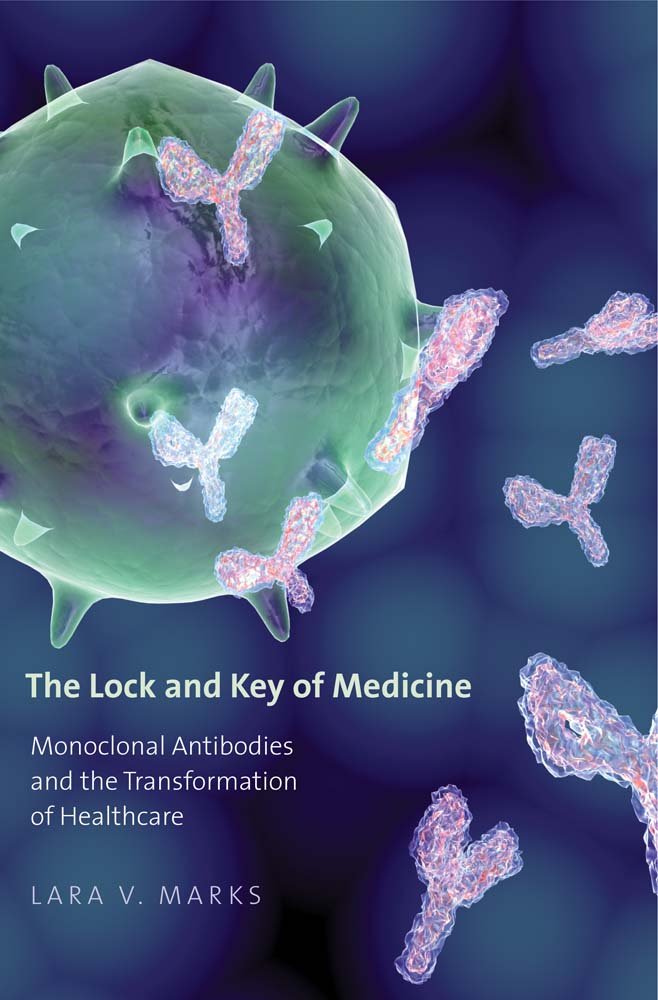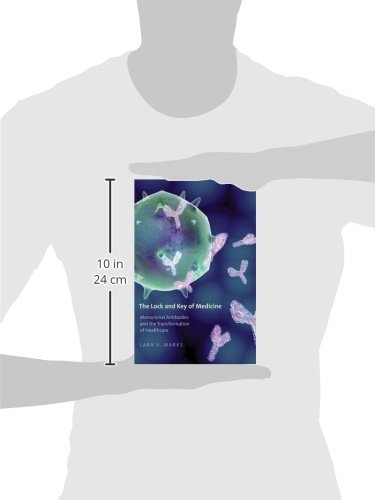


The Lock and Key of Medicine: Monoclonal Antibodies and the Transformation of Healthcare
K**0
Great Medical History
Excellent history of the new drugs quietly changing medicine. I take one of the new monoclonals and now I have good understanding as to what it is doing for me.
D**Y
Excellent Presentation of the Development of Mabs
Monoclonal antibodies are a class of antibodies which on the one hand reflect a response to a specific antigen and on the other hand can activate the immune system to respond to the cells presenting to that antigen and have them eliminated if possible.Back in the mid-1960s when I first came across the clinical use of antibodies what was frequently employed was gamma globulin, a massive amount of mixed IgG, immunoglobulin G, from many people and it was somewhat tried as another treatment for a variety of disorders including some cases of mumps. However the specificity of IgGs and the other immunoglobulins had not yet been ascertained.As this identification progressed it became apparent that specificity of the antibodies could perhaps be a tool to attack certain disorders, including cancers. This then led to many examinations of ways to produce large volumes of specific antibodies. The result was the development of monoclonal antibodies. Simply this is the chimeric combination of antibodies developed to attack a specific target and a vehicle cell that had immortality to bind this product to so it became a small factory for production. From this came, after a significant amount of effort, the monoclonal antibody, and in turn the new therapeutics ending in –mab.The work of Marks, The Lock and Key of Medicine, is an effort to tell this story. It starts with some of the early researchers in the UK who persevered to get some of the initial samples available and the ever changing dynamic of researchers and clinicians. As with so many efforts of this type, there is an ever challenging set of steps that the researchers and the clinicians go through, some winning and some losing. The early days of the late 1960s, when in the practice of medicine little was truly understood but the tools for the researchers were coming on quickly.The author takes the reader through the many individuals and the many crises and victories as they progressed. The book focuses on the many individuals and their steps in developing MABs and the ultimate commercialization of them and their application to human therapeutics.As we progress we have seen basically four classes of Mabs. They are: murine or mouse versions with therapeutics ending in –omab, chimeric murine and human Mabs with the ending –ximab, the humanized Mabs ending in –zumab, and finally all human Mabs ending in –umab. Mabs are now one of the arms in treating a variety of diseases from cancer to arthritis and colitis. At the same time they have become “big pharma” and the author takes the reader through this process in some detail.Overall, the book and an excellent articulation of the people, the conflicts, the achievement, and the institutional progress. From that perspective is an excellent contribution.On the other side it would have been more helpful to have provided some simpler introductions to Mabs and the immune system. For a well-educated reader this is an interesting tale of scientific and clinical development. It does lack a feeling of personal involvement. The description of the individuals is in my opinion quite arm’s length and unlike other works of similar genre this is a discussion of facts and events and dates.What I especially missed was the recent explosion of applications. For example in advanced melanoma there is the use of Mabs and pathway control therapeutics such as BRAF inhibitors and MEK inhibitors. This raises the issue of how does one see a blending of these two or are they not so complementary. On the other hand there are certain cancers such a prostate cancer which may be so complex and changing at such a rapid rate that Mabs would just not work. It would have been useful for the author to have contributed some substance to the debate.One other item which may make the book a bit limited. It would have been helpful for the less experienced reader to have explained the intricacies of the immune system, namely where antibodies come from and what they do. There is also the complex issue of interfering receptors like PD-1 which can down regulate many Ab therapeutics. This is a complex and ever moving story but worth the attempt.Overall, again, this is an excellent book albeit for possibly a smaller community of engaged readers.
N**R
Required reading
A very good book about one of the most important advances in our time. Required reading for everyone.
K**1
An important chapter in recent biomedical history—beautifully recorded
An important chapter in recent biomedical history—beautifully recorded. In her latest book, Dr. Lara Marks, an accomplished medical historian, recounts the extraordinary history of monoclonal antibodies, protein molecules that have profoundly changed many aspects of the practice of medicine. In contrast to ordinary antibodies made in the human or animal body usually in response to infectious agents, monoclonal antibodies are produced in cells grown artificially outside the body. Marks explains the science and the human drama behind the discovery of the process of monoclonal antibody production in the 1970s by Argentinian-born César Milstein and German-born Georges Köhler working in Cambridge, England. In what has turned out to be a historic blunder, the responsible British authorities failed to file patent applications for the discovery, believing there was not enough evidence for the potential usefulness of the technology. Products based on monoclonal antibody technology now generate hundreds of billions US dollars in annual sales. These products include therapeutic drugs, diagnostic products and research reagents. Several of the highest-selling therapeutic drugs used for the treatment of cancer, autoimmune disorders and other ailments are based on monoclonal antibodies.As a historian, Marks writes in language accessible to informed laymen. Yet she also includes enough technical detail—clearly explained. Descriptions of some of the twists and turns in the development of the monoclonal antibody technology and of the resulting products read like mystery stories. This thoroughly researched and clearly written volume will be appreciated by both medical professionals and by the general public interested in the major medical advances made possible by the use of monoclonal antibodies.
B**K
Excellent overview of the modern revolution in drugs such as Herceptin and many others
This is an excellent history of the development of mabs - monoclonal antibodies, from the 1970s through to the 2010s. As a lay (non medical) person I had not realised just how widespread these things are - but drugs like Herceptin are mabs, as is anything ending in 'mab' or 'ab' as a rule. And also, a lot of blood tests such as CA125, CEA and CA19-9 which are used for cancer testing. These incredibly useful tools are synthetic antibodies which target very specific features on cells or proteins and can then either flag them for diagnostics or imaging, or attack them (for cancer). This is a pretty tough read for the non-medical, but if you have a basic scientific underpinning and understand what an antibody and an antigen is, or can read up on them on Wikipedia beforehand, you'll be fine. I had the odd paragraph I had to read a couple or more times before I got it, but it is certainly a fascinating read and very hopeful for the future as labs around the world develop new techniques and new mabs for any number of purposes.
J**O
Good book and good delivery.
The edition came in perfect conditions. Although it took a bit of time, the delivery was perfect. I would recommend this book.
Trustpilot
1 week ago
2 days ago